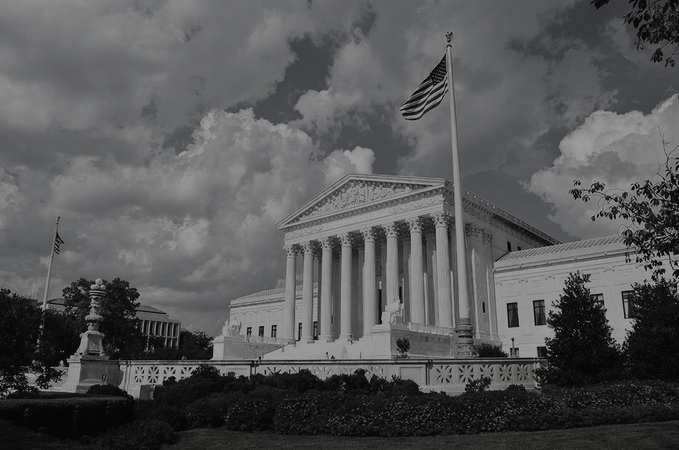
US Supreme Court to hear Trump tariffs case on November 5
The US Supreme Court will hear arguments over the legality of President Donald Trump’s sweeping 2025 tariffs on November 5, a case that could redefine the limits of presidential power and reshape the global trade landscape. The court’s decision will determine not just the fate of the tariffs but whether the president can unilaterally use emergency powers to impose broad economic measures without congressional approval. Trump’s tariffs, which have already been challenged and partially blocked by lower courts, are now squarely the Supreme Court’s responsibility, and it is their constitutional duty to examine whether such executive actions overstep legal limits.
Trump has repeatedly claimed vast executive authority under the pretext of national emergencies, using those claims to justify actions such as deploying troops in American cities and deporting non-citizens without due process under a centuries-old statute. His 2025 tariffs, imposed globally, rest on the International Emergency Economic Powers Act (IEEPA) of 1977, which allows the president to block economic transactions and freeze assets during extraordinary emergencies. However, most legal experts and three lower court rulings have concluded that the law does not grant the president the power to set tariffs.
Under the US Constitution, Congress has the sole authority to set tariffs, though it has delegated limited power to presidents since the 1930s in matters tied to national security. Several past presidents have used this authority narrowly and under congressional oversight. Franklin D. Roosevelt first gained tariff flexibility through the Reciprocal Trade Agreements Act of 1934 to stabilize global commerce during the Great Depression. John F. Kennedy invoked Section 232 of the Trade Expansion Act of 1962 to protect industries essential to defense. Ronald Reagan in the 1980s and George W. Bush in 2002 imposed temporary restrictions on steel imports to shield domestic production, though the WTO later struck down Bush’s measures as inconsistent with global rules. Even Trump, during his first term in 2018, used Section 232 to impose targeted tariffs on steel and aluminum citing national security concerns, but the current global tariffs go far beyond those earlier, more limited measures.
Unlike his predecessors, however, Trump’s current case marks the first time in US history that a president’s use of emergency powers for tariffs has reached the Supreme Court. None of the previous presidents who exercised limited tariff authority ever faced a legal challenge of this magnitude, making this a defining test of constitutional limits on executive power. The responsibility now falls squarely on the Supreme Court to determine whether the president’s claims of emergency authority can override Congress, and whether there are meaningful boundaries to unilateral executive action.
To justify his sweeping 2025 tariffs, Trump argued that the US trade deficit, which has persisted since 1976 and widened during his first term, poses an “unusual and extraordinary threat” to the nation’s security and economy. He also claimed that tariffs on countries like Canada, Mexico, and China were necessary to combat the inflow of fentanyl, even though less than 1% of fentanyl entering the US comes from Canada. Legal experts argue that these reasons stretch IEEPA far beyond its intent, which was to address rare and specific crises, not ongoing economic conditions. The law was passed after Watergate to prevent exactly the kind of open-ended emergency powers Trump now claims.
Trump’s actions also raise questions under World Trade Organization (WTO) rules. WTO agreements prohibit member countries from using national security as a blanket excuse for protectionist trade barriers. Trade restrictions must be narrowly justified, applied equally, and not disguised as economic leverage. Trump’s tariffs, imposed across multiple countries for reasons unrelated to immediate security threats, are viewed internationally as violations of those norms. They risk further retaliatory measures, trade disputes, and damage to America’s credibility as a reliable trading partner.
Small businesses and importers affected by the tariffs have sued the administration, claiming Trump exceeded his authority. Two federal courts and the US Court of International Trade have ruled that IEEPA does not authorize presidents to impose tariffs. The administration’s defense leans on historical precedent from Richard Nixon’s 1971 use of the Trading with the Enemy Act to impose temporary import surcharges. However, IEEPA was enacted in 1977 specifically to replace and restrict those broad wartime powers.
Trump, in characteristic style, has defended his actions with dramatic warnings, claiming that striking down the tariffs would “literally destroy the United States of America.” He has insisted that tariffs not only bring billions in revenue but also serve as a tool of global leverage, even boasting that five of the eight wars he claims to have “ended” were achieved through tariff diplomacy. While conservative justices may be sympathetic to executive power, the court has at times drawn the line when economic stability or institutional norms are at stake, as seen when it temporarily blocked Trump’s attempt to fire a Federal Reserve governor.
Trump is not expected to personally attend the Supreme Court hearing. Presidents and former presidents typically allow their legal teams to represent them in such cases. However, he is almost certain to remain in the US, likely at one of his residences such as Mar-a-Lago, Bedminster, or near Washington. Given his record, he will use the moment to command the media narrative, addressing reporters, issuing statements, and posting online commentary to frame the case as a defense of national sovereignty and strength. Even if he travels for political events during the hearing, he will likely continue to speak out remotely, ensuring that his message dominates headlines.
If the Supreme Court rules against Trump, the consequences could be historic. Such a decision would reaffirm constitutional limits on presidential emergency powers, require rollback of the existing tariffs, and reinforce Congress’s role in setting trade policy. It could also lead to costly refund claims from importers and unsettle global markets. Yet, a legal defeat is unlikely to deter Trump entirely. His administration has already indicated plans to seek other legal avenues to impose similar duties, including using Section 301 of the Trade Act for unfair trade practices or narrower applications of Section 232. He may also pursue bilateral deals and sector-specific tariffs to achieve the same effect under different justifications.
The Supreme Court’s verdict will therefore determine more than the fate of Trump’s tariffs, it will test whether any meaningful boundary remains on presidential power. A ruling against him would reassert the principle that even in times of economic strain, emergency powers cannot replace the role of Congress. The responsibility to clarify these limits now rests entirely with the Supreme Court, making Trump’s tariffs their problem to resolve. Whatever the outcome, Trump is expected to turn the moment into a political spectacle, using it to rally supporters, pressure institutions, and claim that his fight over tariffs is a fight for America’s economic independence.
